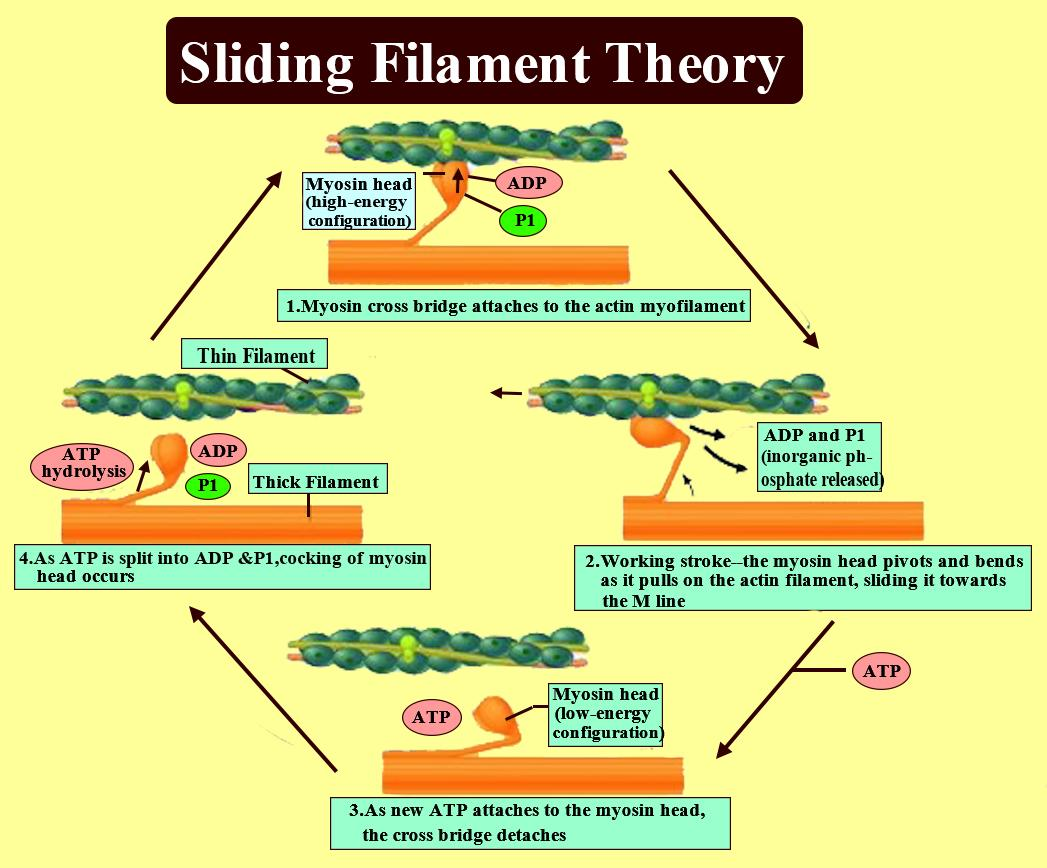
Assertion: Tetany is a rapid spasm in the muscle.
Reason: Tetany is usually caused by an increase in the blood calcium level.
(a) If both assertion and reason are true and the reason is the correct explanation of assertion.
(b) If both assertion and reason are true but the reason is not the correct explanation of assertion.
(c) If the assertion is true and the reason is false.
(d) If both assertion and reason are false.
Answer
476.4k+ views
Hint Muscles are the tissue that lies mesodermally. It contributes most of the bodyweight nearly 40-50 percent and shows properties like excitability, contractility, extensibility, and elasticity, any type of defect that leads to muscular disorder.
Complete Answer:
Tetany is a muscular disorder that causes rapid spasms in muscles, which occur due to less calcium in body fluid. The mechanism of muscle contraction introduced by two scientists H. Huxley and J. Manson through sliding filament theory.
According to this theory contraction of the muscle is a result of sliding of thin myofilament over thick filaments. Muscle contraction takes place by the signal sent by CNS via motor neurons, this signal after reaching neuromuscular junction releases acetylcholine which generates an action potential in the sarcolemma. This action potential spreads throughout the muscle fibers and the sarcoplasmic reticulum releases out calcium in the sarcoplasm. Increase in calcium level results in binding of calcium with troponin subunit on actin filaments which cause the removal of masking of the active site for myosin. Myosin head now binds to the exposed part of active sites on actin and forms a cross-bridge with the utilization of energy from ATP hydrolysis. With the presence of myosin ATPase, calcium, and magnesium ions, ATP breakdown into ATP and Pi by releasing energy in the head. This energy causes the binding of myosin and actin, which pulls action toward the center of the A-band. The Z-line also gets pulled because shortening of sarcomeres leads to contraction, when ADP and Pi get released from myosin then muscle attains a relaxed state. This process continues till calcium ions are pumped back to sarcoplasmic cisternae resulting in masking of the actin filament.

So, the correct answer is ‘If the assertion is true and the reason is false’.
Note: Calcium is also an important component of blood and bone. In blood, calcium helps in blood clotting and also helps for the proper functioning of the heart and kidney whereas bone calcium helps for maintaining bone mass which supports the skeleton.
Complete Answer:
Tetany is a muscular disorder that causes rapid spasms in muscles, which occur due to less calcium in body fluid. The mechanism of muscle contraction introduced by two scientists H. Huxley and J. Manson through sliding filament theory.
According to this theory contraction of the muscle is a result of sliding of thin myofilament over thick filaments. Muscle contraction takes place by the signal sent by CNS via motor neurons, this signal after reaching neuromuscular junction releases acetylcholine which generates an action potential in the sarcolemma. This action potential spreads throughout the muscle fibers and the sarcoplasmic reticulum releases out calcium in the sarcoplasm. Increase in calcium level results in binding of calcium with troponin subunit on actin filaments which cause the removal of masking of the active site for myosin. Myosin head now binds to the exposed part of active sites on actin and forms a cross-bridge with the utilization of energy from ATP hydrolysis. With the presence of myosin ATPase, calcium, and magnesium ions, ATP breakdown into ATP and Pi by releasing energy in the head. This energy causes the binding of myosin and actin, which pulls action toward the center of the A-band. The Z-line also gets pulled because shortening of sarcomeres leads to contraction, when ADP and Pi get released from myosin then muscle attains a relaxed state. This process continues till calcium ions are pumped back to sarcoplasmic cisternae resulting in masking of the actin filament.

So, the correct answer is ‘If the assertion is true and the reason is false’.
Note: Calcium is also an important component of blood and bone. In blood, calcium helps in blood clotting and also helps for the proper functioning of the heart and kidney whereas bone calcium helps for maintaining bone mass which supports the skeleton.
Recently Updated Pages
Master Class 9 General Knowledge: Engaging Questions & Answers for Success

Master Class 9 English: Engaging Questions & Answers for Success

Master Class 9 Science: Engaging Questions & Answers for Success

Master Class 9 Social Science: Engaging Questions & Answers for Success

Master Class 9 Maths: Engaging Questions & Answers for Success

Class 9 Question and Answer - Your Ultimate Solutions Guide

Trending doubts
State and prove Bernoullis theorem class 11 physics CBSE

Who built the Grand Trunk Road AChandragupta Maurya class 11 social science CBSE

1 ton equals to A 100 kg B 1000 kg C 10 kg D 10000 class 11 physics CBSE

State the laws of reflection of light

One Metric ton is equal to kg A 10000 B 1000 C 100 class 11 physics CBSE

Difference Between Prokaryotic Cells and Eukaryotic Cells




